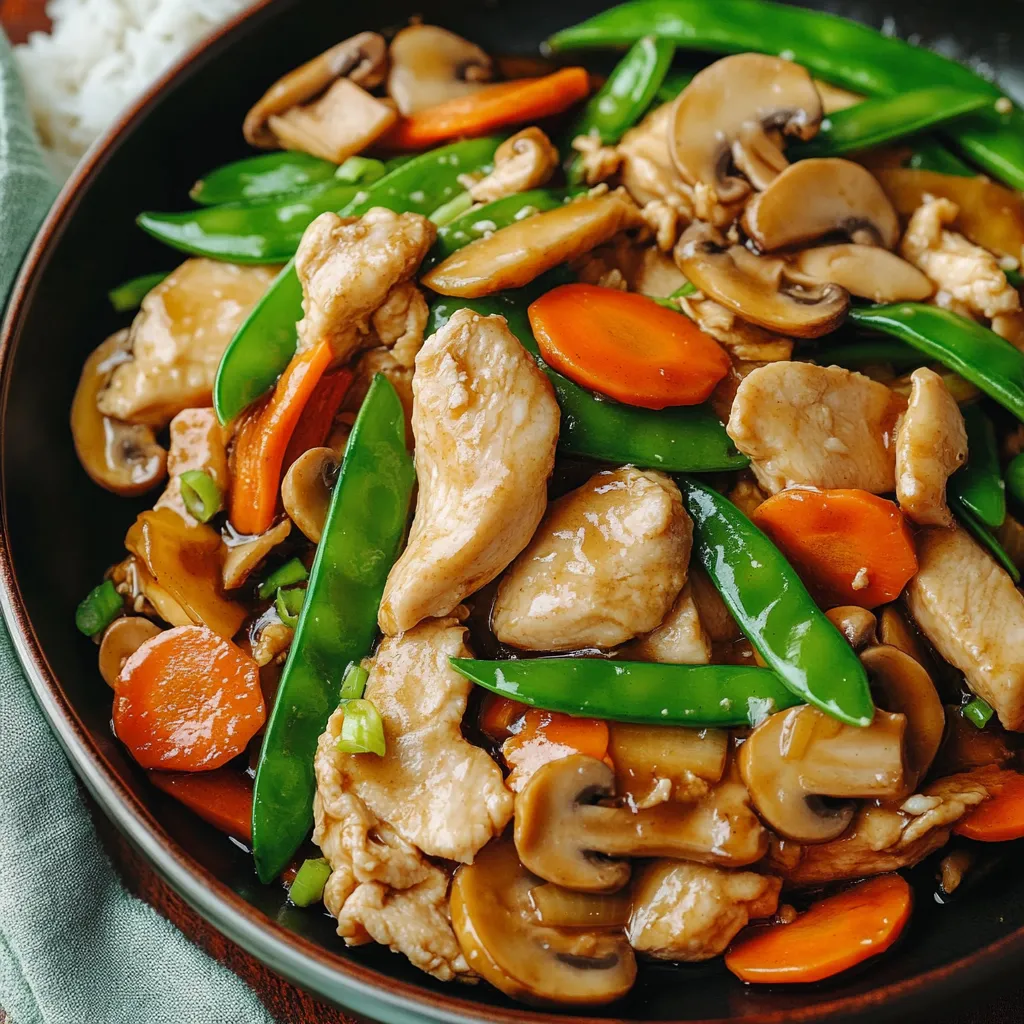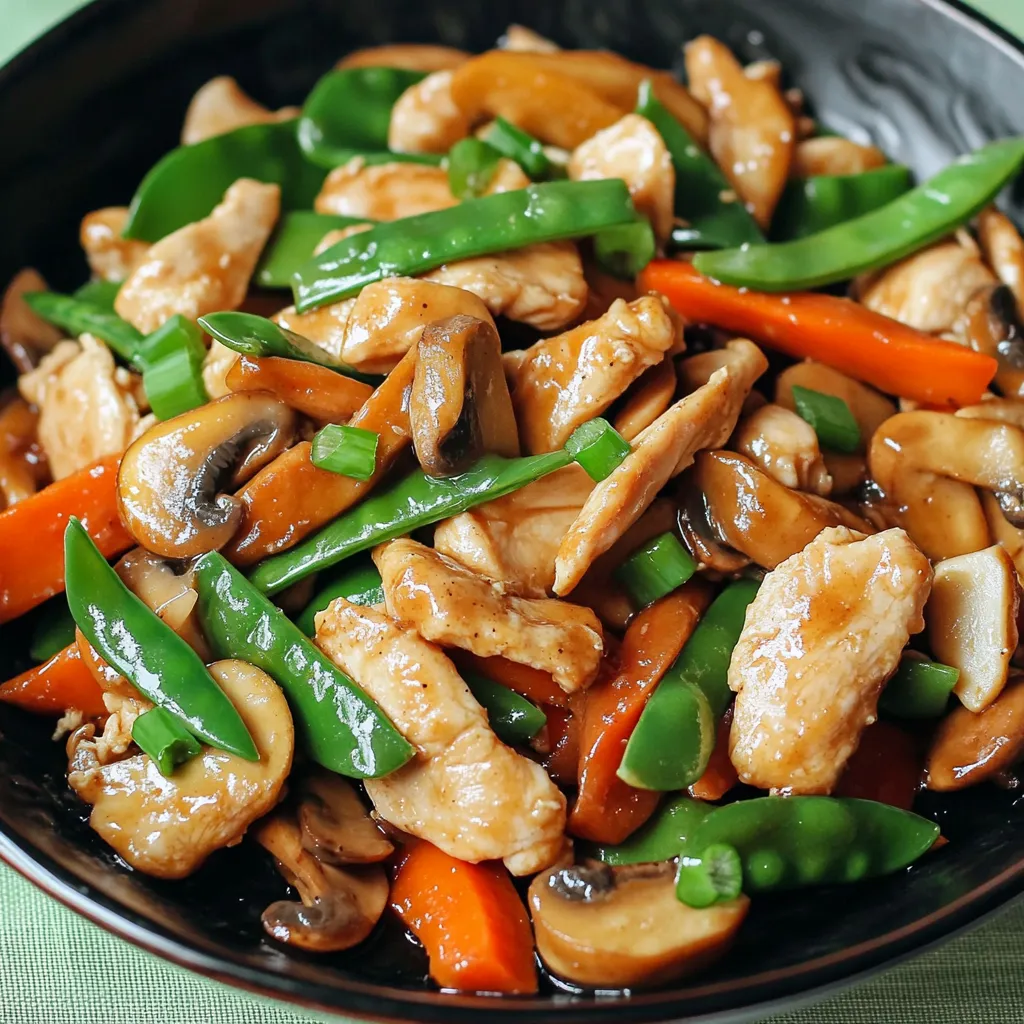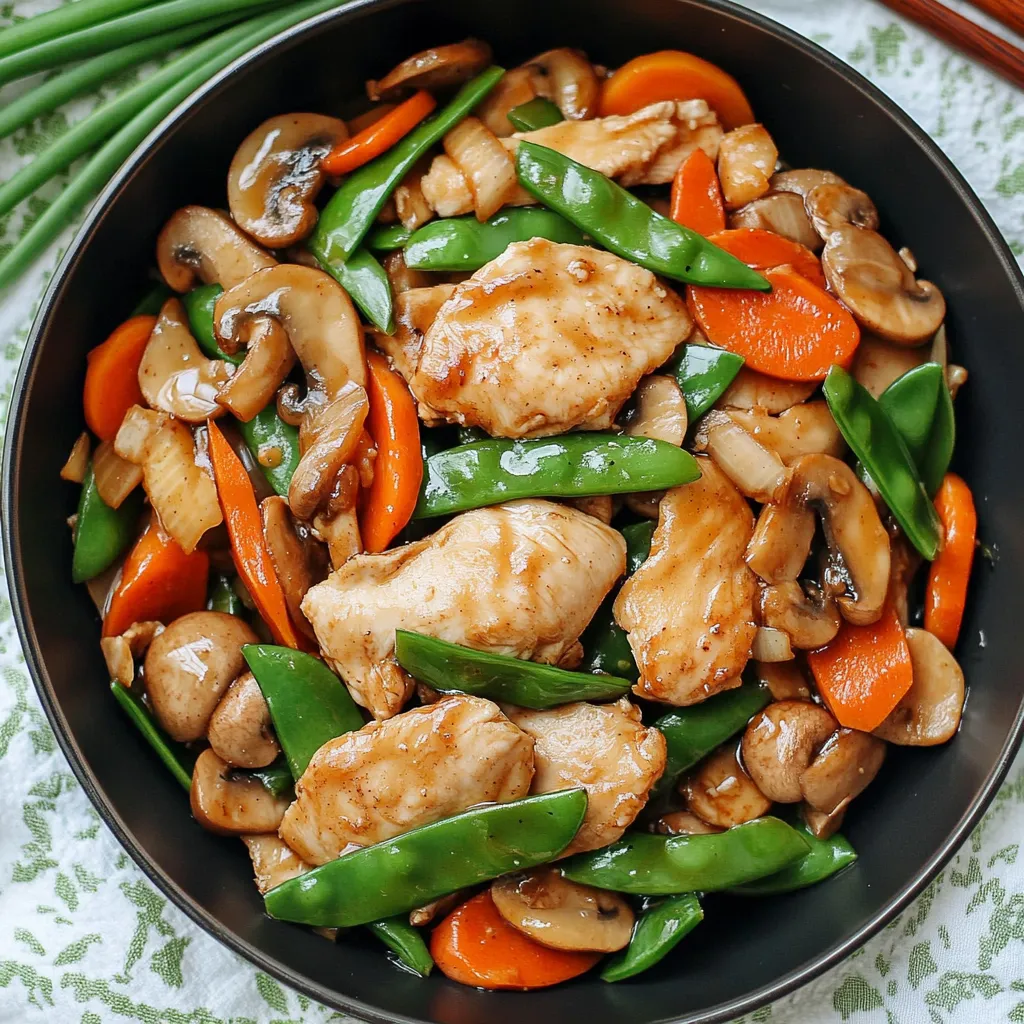 Pin it
Pin it
A hot dish of Moo Goo Gai Pan combines juicy chicken pieces with crunchy veggies in a light, flavorful sauce. This DIY version helps you whip up restaurant-quality Chinese food using fresh stuff without any weird additives.
In our home, we can't get enough of this meal. I first got the recipe from my Chinese friend next door, and I've made it tons of times since then, tweaking things here and there until my family said they liked it more than takeout.
Picking the Perfect Ingredients
- Chicken breast: A pound of chicken breast, sliced thin into 1/4 inch pieces across the grain so it stays tender.
- Mushrooms: Eight ounces of white mushrooms, wiped clean and cut up for that rich taste.
- Ginger: Two inches of fresh ginger, skin removed and chopped small to add heat and flavor.
- Garlic: Three cloves of garlic, chopped super tiny to give a strong taste and smell.
- Bamboo shoots: An 8-ounce can of bamboo shoots, drained and cut up to add some crunch.
- Water chestnuts: An 8-ounce can of water chestnuts, drained and sliced for extra crispness.
- Snow peas: Six ounces of snow peas, ends cut off and strings pulled away for sweet crunchiness.
- Carrots: Two medium carrots, cut thin at an angle to add color and a bit of sweetness.
- Green onions: Three stalks of green onions, cut into one-inch chunks for a light oniony kick.
Crafting Your Culinary Wonder
- Tenderize The Chicken - First Soaking Step:
- Start with totally dry chicken pieces in a bowl. Mix in soy sauce, wine, and white pepper, stirring lightly with your fingers until everything's covered. Let it sit for 10 minutes.
- Second Soaking Step:
- Mix egg white with cornstarch mixture until it's smooth. Pour this over your seasoned chicken, making sure it's all covered evenly. Let it rest for 20 minutes while the room's warm.
Set Up Your Cooking Area
- Get Organized:
- Put out three plates: one for your soaked chicken, one for your cut-up veggies, and one for your mixed sauce. Keep an extra bowl handy for the cooked chicken.
- Watch Your Heat:
- Get your wok or big pan super hot until water drops disappear in about 2 seconds. Turn the heat down to medium-high when you start cooking.
 Pin it
Pin it
My time working in real restaurants taught me that hot pans and quick stirring are key for stir-frying. These tricks made my home cooking way better, especially with dishes like Moo Goo Gai Pan where timing really matters.
Creating the Ultimate Flavor Mix
Get your wok or big pan really hot. Pour oil in slowly, watching it spread across the surface. Cook your soaked chicken in small batches until it's just done, getting a nice golden outside. Take it out and save all those tasty juices. Throw in ginger and garlic, then add mushrooms, carrots, bamboo shoots, and water chestnuts. Put snow peas in at the end so they stay crunchy. Mix the chicken back in and pour your sauce over everything so it all tastes amazing together.
Enjoy It Later Too
Put any extra food in a sealed container and eat it within three days. When you warm it up, use a pan with a tiny bit of water so the veggies don't get mushy. The flavors actually get better overnight, so leftovers taste extra good the next day.
 Pin it
Pin it
I've made this dish for years now, and I've learned that taking your time with prep work makes all the difference. Each veggie brings its own special crunch and flavor, coming together in a meal that's filling and good for you. This has become one of my favorite go-to meals, and it always leaves everyone asking for seconds.
Frequently Asked Questions
- → What does Moo Goo Gai Pan mean?
- It means 'mushroom chicken slices' in Cantonese, where 'moo goo' is mushroom, 'gai' is chicken, and 'pan' refers to slices.
- → Can I use different vegetables?
- Of course! Swap in veggies like celery, broccoli, or baby corn if you'd like.
- → What’s a substitute for Shaoxing wine?
- Dry sherry or chicken broth works well in place of Shaoxing wine.
- → Why cut chicken against the grain?
- It keeps the pieces tender, so they chew nicely and aren’t tough or stringy.
- → Can this dish be made in advance?
- It’s best served fresh. But prepping ingredients ahead of time speeds things up when you’re ready to cook.
